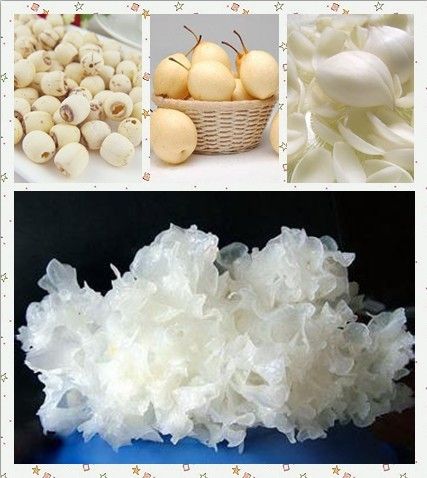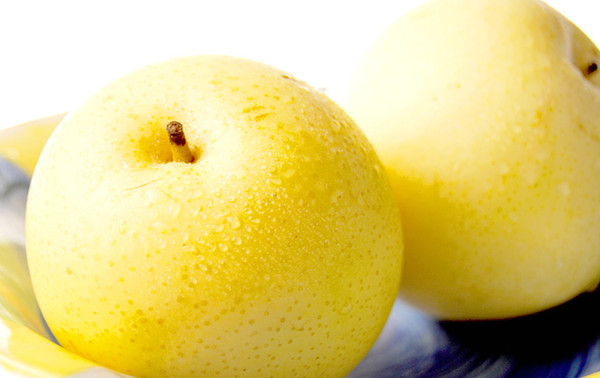The color of food serves as a great complement in culinary art, but in traditional Chinese Medicine (TCM), it can also act as a guide to eat accordingly in different seasons to help strengthen your health.
In TCM, food is categorized into five colors according to its nature and complementary function. Usually, black foods are best for winter, green for spring, red for summer, yellow for late summer and white for autumn.
As you might have noticed, Beijing’s autumn can be quite dry, causing damage to our digestive system as well as coughing and sore throats. The following are some of the most popular white foods and are believed to be the best remedies not only to relieve coughing but also to help nourish our skin.

Pear
If an apple a day keeps the doctor away, you may also consider to add a pear in autumn. In TCM, autumn is a season to nourish the lungs as it is the time when the body utilizes energy from the lungs the most. Pear is considered to have a cold and nourishing nature that helps to balance the yang in our bodies and prevents dryness. Eat it raw if you like but it treats coughing better when cooked in soup.
White fungus
White fungus is also called snow fungus. It is similar in texture to black fungus (wood ear), which is commonly used in Chinese cold dishes and hot pot. White fungus is commonly cooked in sweet soups, with pear or papaya. The taste is refreshing and it also helps to nourish the skin. It is worth mentioning that white fungus can apparently help reduce lung damage from smoking too.
Lily bulbs
Beautiful lily is more than just an ornamental flower. Lily bulbs, which are typically gathered in the autumn, cleaned, then sun-dried, are one of the best autumn foods. The moist nature of lily bulbs can help calm our uneasy spirit during seasonal changes. It can be cooked sweet together with other ingredients such as white fungus and honey, or quick fried with celery and garlic.
Lotus seed
Lotus seed can be purchased in both Chinese grocery stores and pharmacies. It has similar function with the above ingredients but with stronger cold-healing qualities. If you have a fever or a sore throat from eating spicy food, lotus seed can quickly suppress the heat, but it may cause diarrhea if you eat too much. For general health care in autumn, we suggest you add less than a handful of lotus seeds and make a sweet soup with pear, white fungus, and lily bulbs. The trick is to use crystal sugar, which also of a cold nature, instead of regular sugar, and to cook it slowly on gentle heat.

Lotus root
Yes, lotus provides us tremendous benefits. Its root is not only edible, but also delicious. You can cook lotus root in many ways: steam it, stew it, or fry it. Watch out for its starchy strings, resembling spider webs, after you peel it. My preferred dish is stewed lotus root with chicken.
Yam
Yams with their skin look like a rusty, wooden rods, that’s why many Chinese people would call them “iron rod yams.” Yams are usually steamed before being eaten and the texture is starchy, with a subtle flavor, which is why many Chinese people love dipping it in sugar. When you peel it be very careful of its mucus as it can cause skin irritation and itching.
White bean
This kind of bean is much bigger than regular beans and they taste very starchy. People boil it with pepper and aniseed.
Water chestnut
Indigenous to Southeast Asia, fresh water chestnuts need to be removed from their muddy coating, or you can use them stuffing. It’s good for clearing your lungs, which is why it’s very good for smokers. You can also eat them raw as if a fruit.
We hope you enjoy a healthy autumn with these white foods. However, do not get obsessed with only white foods – the fundamental theories about TCM are all about balance, and life is supposed to be colorful!
This blog first appeared on our sister site beijingkids.
Photos: china.org.cn


